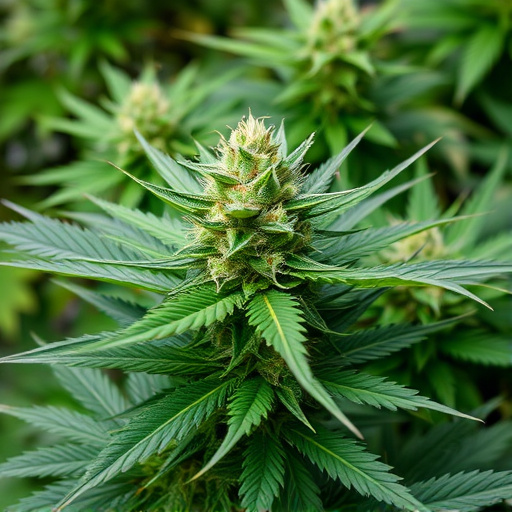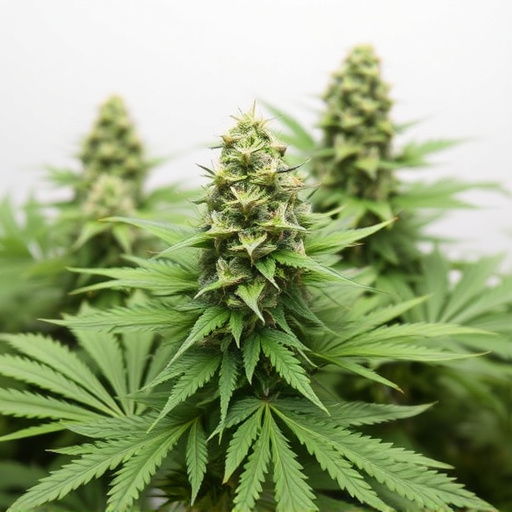Cannabis Sativa strains offer a range of short-term effects, from heightened senses and euphoria to relaxation and increased appetite, with physical impacts like red eyes and dry mouth. However, risks include impaired memory, anxiety, paranoia, and psychosis, especially in young adults. Responsible consumption and understanding strain characteristics are crucial to mitigate these adverse effects. High THC content strains can cause more intense symptoms, including dizziness and coordination impairment, and individuals with heart conditions should be cautious as cannabis can increase heart rate. Cannabis significantly impacts mental and emotional states, offering benefits like altered perceptions but potential drawbacks such as dependence and withdrawal. Strain variations determined by terpene and cannabinoid profiles play a vital role in shaping experiences that can induce various states of calmness, creativity, energy, or sociability.
“Unraveling the multifaceted effects of cannabis sativa strains is essential for both recreational users and medical professionals. This article delves into the intricate world of cannabis, exploring its short-term and long-term impacts on health and well-being.
From physical reactions like dizziness to potential mental health risks, we dissect the various outcomes associated with cannabis use. Additionally, we highlight the role of specific cannabis sativa strains in medical applications, including their therapeutic benefits and unique chemical compositions. Understanding these effects is crucial for navigating the evolving legal landscape and ensuring responsible cannabis use.”
- Short-Term Effects of Cannabis Sativa Strains
- – Physical Reactions: Dizziness, Coordination Impairment, Increased Heart Rate
- – Mental and Emotional Changes: Altered Perception, Relaxation, Potential Anxiety or Paranoia
Short-Term Effects of Cannabis Sativa Strains

Cannabis Sativa strains, known for their diverse effects, produce short-term impacts that vary based on individual tolerance and consumption method. Typically, users may experience heightened sensory perception, with colors appearing more vibrant and sounds seeming richer. This is often accompanied by a sense of euphoria, relaxation, and increased appetite—a phenomenon commonly referred to as “the munchies.” Physical effects can include red eyes, dry mouth, and muscle relaxation, making it appealing for pain management and stress relief in the short term.
However, short-term use also carries potential risks, particularly for young adults whose brains are still developing. These risks include impaired memory and cognitive functions, as well as increased heart rate and anxiety levels. In some cases, consumers may experience paranoia or psychosis, especially when high THC content is involved. While temporary, these effects highlight the importance of responsible consumption and understanding individual strain characteristics.
– Physical Reactions: Dizziness, Coordination Impairment, Increased Heart Rate

The immediate physical reactions to consuming cannabis sativa strains can vary but often include dizziness and coordination impairment. These effects are typically more pronounced with higher THC (tetrahydrocannabinol) content strains, known for their potent mind-altering properties. The dizziness may manifest as a lightheaded feeling or even brief spells of vertigo, while impaired coordination can make simple tasks like walking or gripping objects more challenging.
Another common physical response is an increased heart rate, often leading to palpitations. This cardiovascular effect can be a result of the direct impact of THC on the body’s central nervous system. For some individuals, especially those with pre-existing heart conditions, this elevated heart rate can be concerning and warrant cautious consumption or avoidance altogether.
– Mental and Emotional Changes: Altered Perception, Relaxation, Potential Anxiety or Paranoia

Cannabis, particularly cannabis sativa strains, can induce significant mental and emotional changes in users. One of the most renowned effects is altered perception, where sensory experiences can feel heightened or distorted. This can range from appreciating art and music more deeply to perceiving colors more vibrantly. However, this alteration also comes with potential downsides; some users report feeling anxious or paranoid, especially when consuming higher concentrations. The relaxation associated with cannabis can be comforting for many, aiding in stress relief and insomnia treatment. Yet, chronic use may lead to dependence and withdrawal symptoms over time.
These mental shifts are influenced by various factors, including the strain’s unique chemical composition (terpenes and cannabinoids) and individual tolerance and psyche. Different cannabis sativa strains offer diverse experiences; while some promote a calm and creative mindset, others might stimulate energy and sociability. Understanding these variations is crucial for users to make informed choices, especially when navigating the legal and medicinal cannabis landscape.
In conclusion, while short-term effects of cannabis sativa strains may include relaxation and altered perception, they can also manifest as dizziness, coordination impairment, increased heart rate, and potential anxiety or paranoia. Understanding these temporary impacts is essential for users to make informed decisions regarding their consumption. Long-term use of cannabis requires further study, but awareness of its short-term effects is crucial for promoting responsible usage.














